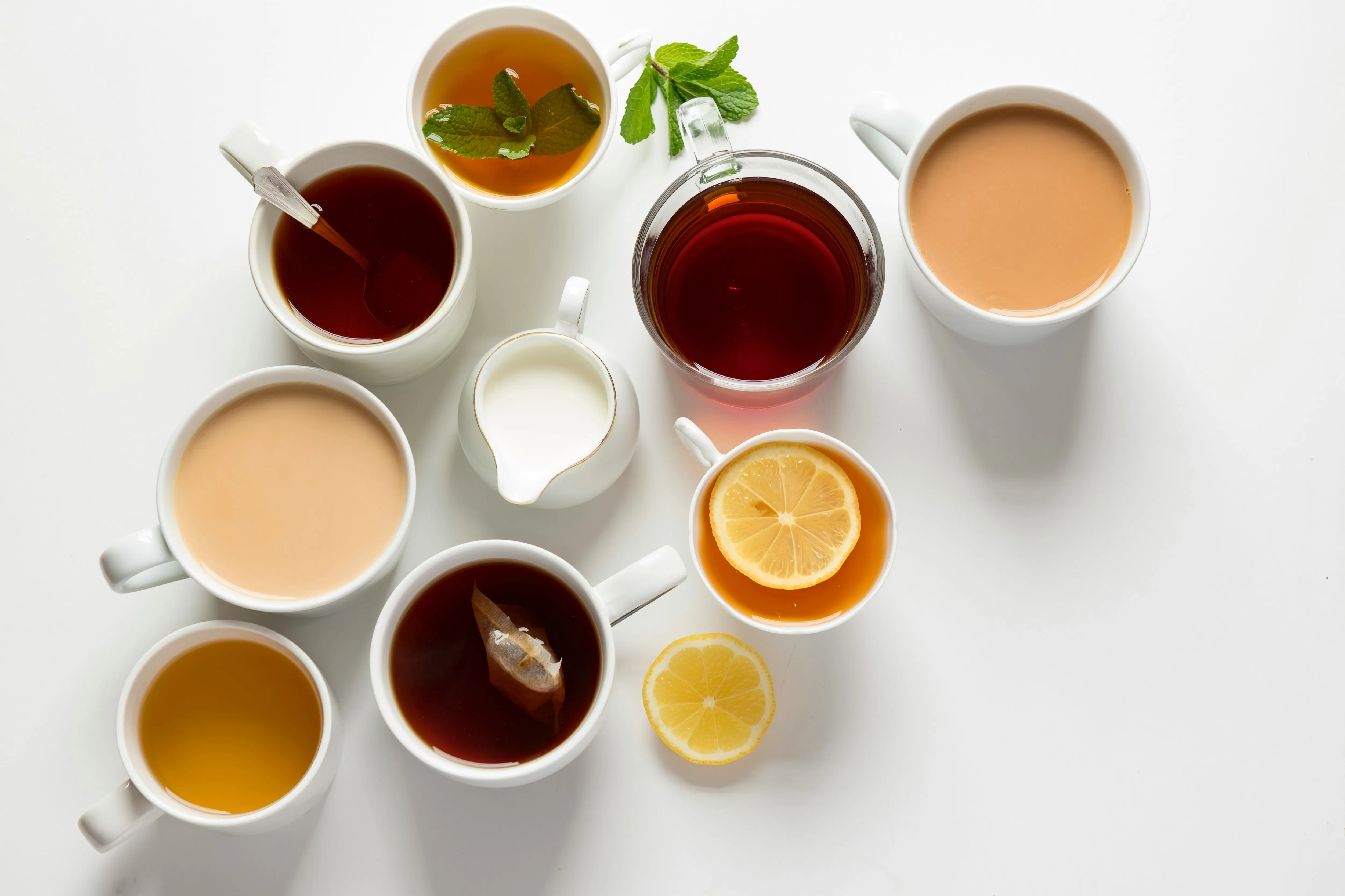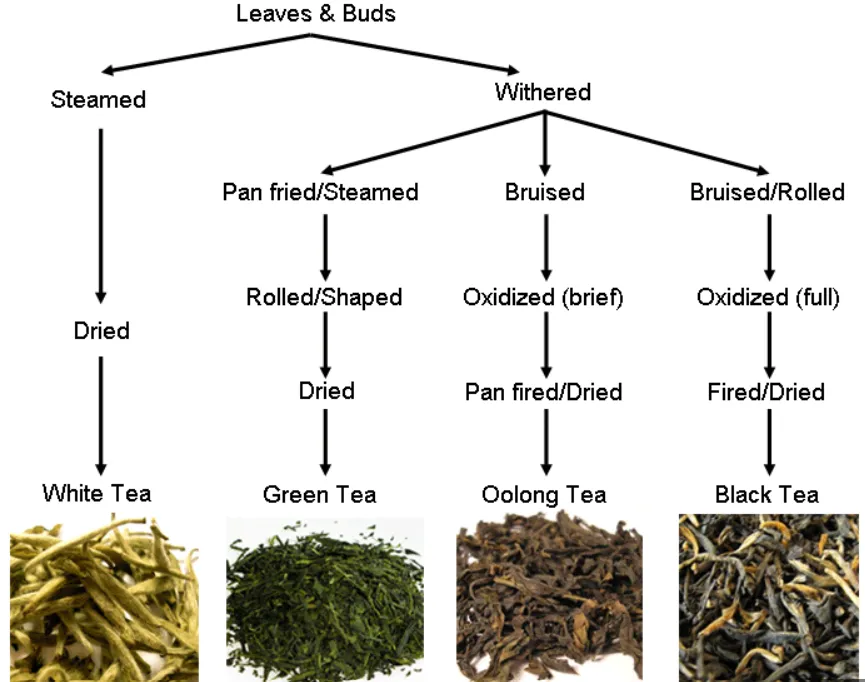How Do You Like Your Tea ?🫨

Embark on an adventure into the captivating world of tea, where each cup holds not just a burst of flavor, but also a treasure trove of hidden health benefits waiting to be uncovered. From the bold allure of black teas to the delicate charm of white varieties, journey through the tantalizing array of flavors that await. But there's more to tea than meets the eye! Learn the art of dressing up your tea with a hint of citrus to a swirl of honey, transforming each sip into an indulgent experience.
Discover the secrets of antioxidants nestled within every brew, offering potential perks such as cancer prevention, cholesterol reduction, and metabolism enhancement. Join us on this flavorful expedition, where every cup promises not just refreshment, but also a journey of wellness and discovery.
Remember this key point when exploring TEA:
There exist solely four varieties
Tea ranks among the most favored post-meal beverages globally, yet surprisingly, many remain unaware that within every supermarket lie four distinct flavors and types of tea. Each variant comprises unique ingredients and carries its own set of merits and drawbacks, which I'll elucidate.
- 1) Black tea
- 2) Green tea
- 3) White tea
- 4) Oolong tea
The Tea Family's, Family Tree

These four types of tea derive from the leaves of the Camellia sinensis, commonly referred to as the tea plant. Other herbal infusions like chamomile, ginger, or rooibos are not categorized as true teas because they do not involve the tea plant in their production. The distinction among the four tea variations arises from their unique manufacturing processes. Furthermore, each type of tea boasts its own distinct flavor profile and offers various health benefits.
- White Tea
White tea stands out as a rarer and pricier option compared to the previously discussed teas. Originating from China's Fujian province, white tea is crafted from young Camellia sinensis leaves, undergoing an extensive process involving steaming or frying, followed by inactive fermentation and drying. Its name originates from the fact that the leaves are harvested while still adorned with white hair buds. White tea is characterized by its delicate, sweet taste, distinguishing it from other tea varieties. Additionally, it boasts the lowest caffeine content and the highest antioxidant levels, which are beneficial for cancer prevention.
- Green Tea
Green tea, a lightly oxidized variety, has enjoyed popularity in China, Japan, and Korea for centuries. Its renown has surged in the West due to rumors surrounding its health benefits. Scientifically proven advantages include cholesterol reduction, cancer prevention, increased metabolic rates, and assistance in managing various conditions and illnesses. Green tea undergoes a process of light oxidation, drying, but not fermentation. Typically served plain, without sugar or milk, some variants may carry a slight bitterness, necessitating brewing at temperatures below boiling point for optimal flavor.
- Oolong tea
Oolong tea, a traditional Chinese variety, is often served alongside Chinese cuisine such as dim sum and chop suey in American Chinese restaurants. Named "black dragon" in Chinese, it owes its moniker to the long, dark leaves that resemble wild black dragons when brewed. The distinctive flavor of oolong tea is achieved through a meticulous process involving sun drying of Camellia sinensis leaves, light oxidation, and subsequent cooling and drying phases. The outcome is a taste that falls between the robustness of black tea and the delicacy of green tea, offering a unique balance appreciated by tea enthusiasts.
- Black tea
Black tea, characterized by its bold flavor and burnt sienna color, reigns as the most favored type of tea in the Western world. Whether enjoyed with a splash of lemon or enhanced with milk and sugar, a cup of black tea is a staple in daily tea ceremonies worldwide. Crafted from heavily oxidized Camellia sinensis leaves, black tea, when served plain, boasts no calories, carbohydrates, or fats. It contains a higher caffeine content than other tea varieties but still less than that found in a typical cup of coffee.
Conclusion:
In conclusion, exploring the diverse array of teas—black, green, white, and oolong—unveils a world of flavors and potential health perks. Despite their common origin from the Camellia sinensis plant, each type undergoes unique processing methods, resulting in distinct taste profiles that cater to a variety of preferences. From the robustness of black tea to the delicate nuances of white tea, and the refreshing notes of green and oolong teas, there truly is a tea for every palate. Moreover, these teas boast numerous health benefits attributed to their antioxidant content. Antioxidants, known for their disease-fighting properties, may aid in cancer prevention, lower cholesterol levels, and boost metabolism, thereby contributing to overall well-being. By comprehending the differences and potential advantages of each type, tea enthusiasts can fully appreciate the diversity and benefits that this beloved beverage has to offer. Emphasizing the importance of tea as not only a delightful beverage but also a potential health ally can further enrich our blog article and provide valuable insights to our readers.
Thank you wikipedia for the imagery,
Author: GoldWiz
©️.blobofblogs.2024



